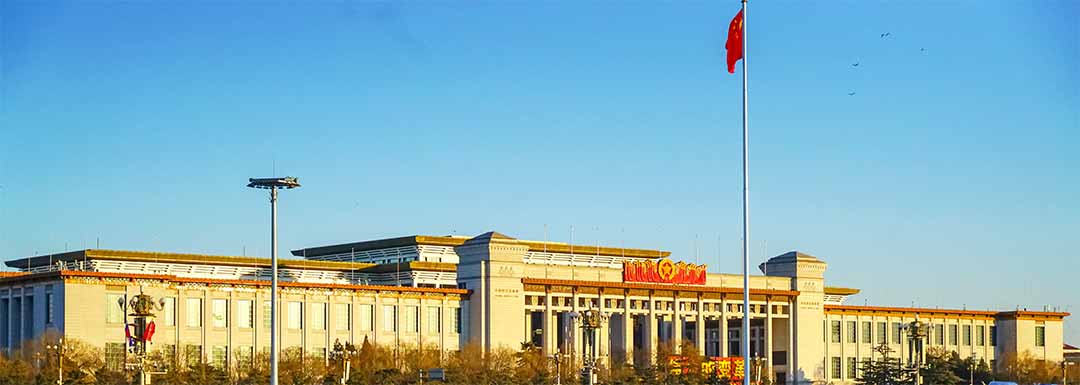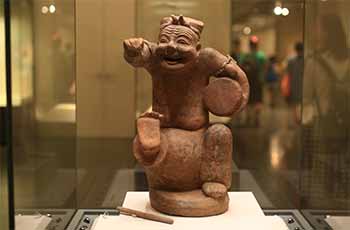National Museum of China

As the largest comprehensive museum in China, the National Museum of China gathers the essences of culture nationwide. With a total construction area nearly 200,000 sqm, the five-story Museum is 42.5 m tall with two stories underground. There are 48 exhibition halls and it takes at least a day to visit all of them.
- Chinese Name: 中国国家博物馆 Zhōng Guó Guó Jiā Bó Wù Guǎn
- Duration: 3-5 hours
- Entrance fee: Free (Foreigners can ask for free ticket by showing passports at the Ticket Office, which is in the south of the West Gate, and enter into the Museum at the West Gate) Opening hours: 9:00 — 17:00 (Ticket selling stops at 15:30; no entry is allowed into the Museum after 16:00; all visitors must leave after 16:30; closes at 17:00). Closed on Monday.
- Address: 16 East Chang’an Street, Dongcheng District, Beijing City
- Best time to visit: All year round
- Luggage storage: A luggage storage service is provided, with prices (RMB 2-10 every time) set based on the sizes of luggage. Your luggage should be withdrawn before 17:00 on the same day.
- Photo taking: Visitors can take photos but no flashlight or tripod are allowed with the basic display and topic exhibition taken into consideration. For temporary exhibitions, photo-taking rules are decided by exhibition agreements. A notice would be placed in the exhibition hall if no photo-taking is allowed.
- How to get there: Take Bus 2, 5, 120, 126 or 210, and get off at Tian’anmen Square West Station or Tian’anmen Square East Station
- How to get there by subway: Take Line 1 and get off at Tian’anmen East Station; or take Line 2 and get off at Qianmen Station
Highlights of National Museum of China
The Ancient China exhibition (about 2 hours) and the Bronze Ware Exhibition (about 1 hour) are recommended. The Service Center on the first floor of the National Museum of China offers a self-guided tour service. There are English guides for Ancient China and The Road to Rejuvenation, with guides for the remaining exhibitions in Chinese only.
1. Exhibition Hall of Ancient China
 The ancient exhition of the museum
The ancient exhition of the museum The exhibition hall of Ancient China is on the first floor underground, with items displayed in the order of dynasties. The exhibition is like a comprehensive history, with all excellent items gathered here. You can enter into the hall from the lobby in the north and start with the ancient times. Many familiar cultural relics can be found here, such as the Painted Pottery Basin with Human Face Of Fish Pattern, the Hongshan Cultural Jade Dragon, the Singing Pottery Figurine with Drums in Hands, the Four-ram Zum in the Shang-Zhou Period, the Colored Terra-cotta Warriors in the West Han Dynasty, as well as the Phoenix Crown of the Empress Dowager under the reign of Emperor Wanli in the Ming Dynasty, all being essences of the Chinese civilization.
2. Bronze Ware Exhibition: Masterpieces from the Age of Bronze
Next comes the Bronze Ware Exhibition in the Central Hall of the third floor. Ancient cooking vessels of the Exhibition are highlights in the Museum, such as the Simuwu Cauldron (the most excellent one in China), the Zilong Cauldron (the largest circular one in the Shang Dynasty), and the Dayu Cauldron with 300 characters of inscription inside. All are delicately forged and taken as masterpieces of the Bronze Age in China.
3. Other Halls
If time allows, you can visit exhibitions of Buddha statues, jades, coins and porcelain. The Road to Rejuvenation on the first and second floor is recommended if you are interested in modern Chinese history. Items displayed here are also arranged in the order of time and reflect the history from the War of Opium to modern China. The oil painting Founding Ceremony of People’s Republic of China can be found in the classic modern art series on the first floor.
4. Educational Experience Zone
If kids come along, you can book events in the educational experience zone in advance. Painting and art and craft activities make history vivid and are helpful for children education. Topic activities are organized on holidays. Please visit the official website for time, topic and application of such activities. These activities are amusing if your kids know a little about China.
You can go to Tian’anmen Square after visiting the Museum. And if finish visiting the Museum in the afternoon, you can wait for the flag-lowering ceremony on the Square.
Drop us a line and we'll connect you with the top China expert in no time!